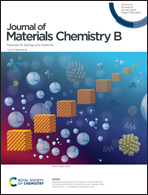Nanomedicine-induced cell pyroptosis to enhance antitumor immunotherapy
Abstract
Immunotherapy is a therapeutic modality designed to elicit or augment an immune response against malignancies. Despite the immune system's ability to detect and eradicate neoplastic cells, certain neoplastic cells can elude immune surveillance and elimination through diverse mechanisms. Therefore, antitumor immunotherapy has emerged as a propitious strategy. Pyroptosis, a type of programmed cell death (PCD) regulated by Gasdermin (GSDM), is associated with cytomembrane rupture due to continuous cell expansion, which results in the release of cellular contents that can trigger robust inflammatory and immune responses. The field of nanomedicine has made promising progress, enabling the application of nanotechnology to enhance the effectiveness and specificity of cancer therapy by potentiating, enabling, or augmenting pyroptosis. In this review, we comprehensively examine the paradigms underlying antitumor immunity, particularly paradigms related to nanotherapeutics combined with pyroptosis; these treatments include chemotherapy (CT), hyperthermia therapy, photodynamic therapy (PDT), chemodynamic therapy (CDT), ion-interference therapy (IIT), biomimetic therapy, and combination therapy. Furthermore, we thoroughly discuss the coordinated mechanisms that regulate these paradigms. This review is expected to enhance the understanding of the interplay between pyroptosis and antitumor immunotherapy, broaden the utilization of diverse nanomaterials in pyroptosis-based antitumor immunotherapy, and facilitate advancements in clinical tumor therapy.

- This article is part of the themed collection: Journal of Materials Chemistry B Recent Review Articles


 Please wait while we load your content...
Please wait while we load your content...